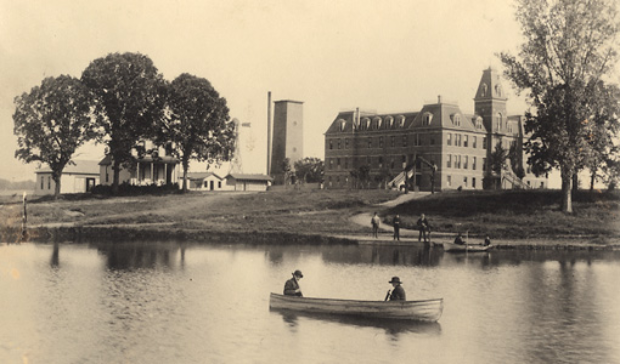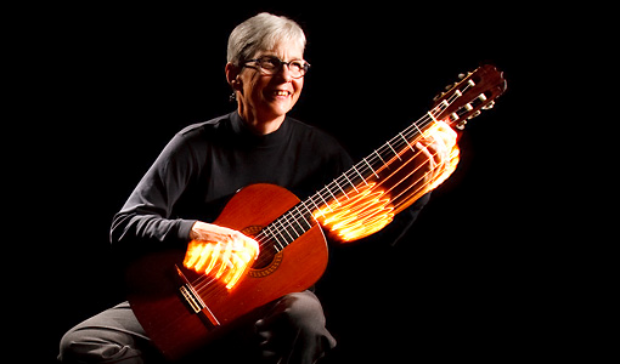On the day that St.Thomas Aquinas Seminary opened in 1885, its rector, Father Thomas O’Gorman, made the following entry in his diary: “Classes opened September 9, in the afternoon, with a short class. There being no books, no desks, very little was possible.”
No books? No desks? It’s hard to imagine, isn’t it? And those words – “very little was possible” – aren’t in our vocabulary any more, are they? I don’t say that to demean O’Gorman’s efforts, nor would I ever think we are immune to the challenges that he and Archbishop John Ireland faced on a daily basis. But as we pause this year to celebrate our 125th anniversary, I take great comfort in that our forebears have always met – and always surpassed – Ireland’s clarion call for a “continuity of effort.”
It is intriguing to consider what motivated the six faculty members and 62 students, who ranged in age from high school teenagers to post-baccalaureate seminarians, to enroll in the fledgling seminary that Ireland founded on the farm of William and Elizabeth Finn.
It is sobering to read about the many failures, whether precipitated by finances, world wars, depressions or floundering academic programs, and how more than once it seemed the next big question was whether to close the doors.
And it is fascinating to learn of the way St. Thomas always managed to bounce back from the edge of crisis – driven, perhaps, by a college community’s determination to succeed but also by its desire to avoid the embarrassment of having to close its doors.
Ireland, ever the articulate and visionary leader, emphasized the importance of a “continuity of effort” if an institution were to remain successful. While he expressed his vision in the 1880s, it is even more relevant today and will continue to serve us well over the next 125 years. Wrote Ireland:
“No institution can afford to be known to its members and builders merely by a glance at its present forms and movements. It must, in justice to itself, take them back into the depths of the fibers of its preceding being, even to its earliest origins, and unfold to their inquiring gaze its whole past, with its aspirations, its plannings, its strugglings for life and growth. Otherwise, it has no assurance of that continuity of effort which alone safeguards its identity.”
Irelands words captivated the late Joseph Connors, an alumnus, English professor and author of Journey Toward Fulfillment, the centennial history of St. Thomas. In an essay published in 1990, Connors said “that continuity of effort which alone safeguards its identity [is] a concept of the utmost importance for anyone who examines the story of St. Thomas.”
Consider St. Thomas today. It is the largest private institution of higher education in Minnesota, with 11,000 students at campuses in St. Paul, Minneapolis, Owatonna and Rome. What links exist between the University of St. Thomas today and the St. Thomas Aquinas Seminary of 125 years ago?Wherein lies the “continuity of effort”?
Let us first look at St. Thomas’ current mission statement: “Inspired by Catholic intellectual tradition, the University of St. Thomas educates students to be morally responsible leaders who think critically, act wisely and work skillfully to advance the common good.”
I believe every word of that statement would find endorsement by the institution’s leaders going all the way back to when Ireland chose O’Gorman, his boyhood friend, to be the first rector. Each phrase, in fact, articulates a key characteristic of our aspirations of the last 125 years.
Connors wrote in his essay, from which I borrow liberally for this story, that an early prospectus stated St. Thomas’ emphasis on liberal learning would be “sufficiently comprehensive in scope, and practical in its aims, to fit the graduates ... for whatever walk in life their bent of mind may afterwards lead them to follow; whether it be the holy priesthood, a secular profession, or a business career, a ripe scholarship being given as the foundation on which to build the lifelong work of the future.”
Ireland might well have dictated our efforts to advance the common good, Connors wrote, “so totally characteristic it was of his thinking: ‘Into the arena, priest and layman!’ he urged. ‘Seek out social evils, and lead in movements that tend to rectify them.’ And again, ‘Our place is in the world as well as in the sanctuary; in the world, where we can prove our love for it and render it a service.’”
Of course, “continuity of effort doesn’t necessarily mean continuity of success,” Connors warned. “Exploring any institution’s history reveals not only its aspirations but (again, in Ireland’s own words) ‘its strugglings for life and growth.’”
St. Thomas’ struggles have sometimes been painful indeed.
The College of St. Thomas succeeded St. Thomas Aquinas Seminary and came into existence in 1894 when Ireland, backed by a gift from James J. and Mary Mehegan Hill, established the St. Paul Seminary. St. Thomas remained a small school in its first two decades as it sought to increase its enrollment (about 100) and keep its doors open despite a chronic lack of money.
Father Humphrey Moynihan’s 18-year tenure as president (1903-1921) brought important developments. Five major buildings were constructed, including Ireland Hall (1912) and the Chapel of St. Thomas Aquinas (1918). He established successful military and athletics programs, increased enrollment from 250 to 1,000, grew the faculty from 15 to 46, founded an alumni association, conferred the first degrees and achieved full accreditation.
Rapid decline ensued in the nine years following Ireland’s death and the end ofWorld War I. “True, the institution was much larger and stronger than it had been in the 1890s,” Connors wrote, “but the picture then had been one of gradual progress, whereas now it was one of steady deterioration: in enrollment, physical facilities, financial stability, and in academic reputation.”
By 1928, the situation had become so unstable that Archbishop Austin Dowling placed St. Thomas under the direction of the Congregation of Holy Cross, which also ran the University of Notre Dame, for a five-year period. Holy Cross Father Matthew Schumacher, the new president, reorganized St. Thomas’ academic structure, restored its academic standing and constructed Aquinas Hall, all despite the onset of the Great Depression.
But new Archbishop John Gregory Murray decided to restore St. Thomas to the diocesan clergy when the Holy Cross contract ended in 1933. The next president, Father James Moynihan, hired key faculty and improved the curriculum and library resources - and then World War II dawned. Enrollment dropped under 100, and St. Thomas remained open only because it secured the Navy V-12 program, which trained 700 men until 1945.
During the presidency (1944-56) of Father Vincent Flynn, enrollment exploded to nearly 2,000 as veterans took advantage of the G.I. bill. He placed war surplus buildings on the lower quadrangle and constructed a science building, Albertus Magnus Hall, and our iconic Arches connecting that building and Aquinas Hall.
James Shannon became president at the age of 35, and his decade was marked by unprecedented progress in every area of campus life. Connors wrote: substantial increases in faculty salaries, curriculum revisions, new academic programs such as a journalism department, and the construction of O’Shaughnessy Library, Murray Hall and Dowling Hall.
The Ford Foundation selected St. Thomas in 1962 for a $1.5 million grant, and Shannon launched our first capital campaign, A Program for Great Teaching. Three years later, the Carnegie Foundation chose St. Thomas among 12 liberal arts colleges (and the only Catholic college) for study of “how a college can be what it ought to be.” The Carnegie report said we “had faced new issues in higher education with a foresight and courage that made it a bellwether among Catholic colleges,” and predicted that St. Thomas, because of its leadership, governance and extraordinary opportunities in a progressive metropolitan area, would “stand out with a clear identity and continue to be a pioneer Catholic college.”
The prediction could not have been truer. During Monsignor Terrence Murphy’s presidency (1966-1991), St. Thomas evolved from a college with 1,900 men as undergraduate students and 260 graduate education students into a comprehensive co-educational university with an impressive range of graduate programs and an enrollment of nearly 10,000.
It has been my fortune to have served as president for 18 years, guided by an entrepreneurial Board of Trustees. A collective vision has led us to develop a Minneapolis campus; construct a science center, a business building and new housing in St. Paul; expand our study-abroad programs; establish programs in law, Catholic studies, and mechanical and electrical engineering; and create an array of programs that earned a “Community Engagement” designation from the Carnegie Foundation for the Advancement of Teaching.
Much of this has been made possible through the incredible generosity of our benefactors, who have contributed $620 million – and counting – during our Ever Press Forward (1993-2001) and Opening Doors campaigns (since 2003). The current recession raises daunting challenges as we attempt to raise another $130 million and achieve our $500 million Opening Doors goal, but I have no doubt that we will succeed – and grandly so – for one simple reason: A continuity of effort.
For 125 years St. Thomas has carried out the mission so wisely and compellingly articulated by its founder, both in good times and bad, through its “strugglings for life and growth.” Our secret has been a caring and committed community of students, faculty, staff, alumni and benefactors.
As Connors wrote: “Sometime, in a campus walk, stop for a few moments at the crest of the slope where the walks divide leading to the residence halls, and look out across the lower campus. Try to imagine what it must have been like for a young ex-soldier named William Finn, who stood near there in 1848, studying a primitive landscape and thinking, ‘This would be the best place.’”
The best place, then, for his farmhouse and, today, for this university. Will you join me as we embrace that continuity of effort and continue to open doors for the next 125 years?





